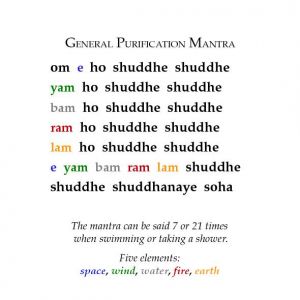「Five elements 五大 / 五大種」修訂間的差異
跳至導覽
跳至搜尋
SSTC Bubble(對話 | 貢獻) 小 (已匯入 1 筆修訂) |
SSTC Bubble(對話 | 貢獻) 小 (SSTC Bubble 已移動頁面 Five elements 至 Five elements 五大) |
(無差異)
| |
於 2015年7月25日 (六) 12:58 的修訂
Five elements (Tib. བྱུང་བ་ལྔ་, Wyl. 'byung ba lnga, jungwa nga) — the outer elements that constitute all matter. They are:
- earth (Skt. pṛthivī; Wyl. sa)
- water (Skt. ab; Wyl. chu)
- fire (Skt. tejas; Wyl. me)
- air (or wind) (Skt. vāyu; Wyl. rlung) and
- space (Skt. ākāśa; nam mkha')
These outer elements interact with the inner elements within our own physical body, and the potential and quality of these five elements also exist within our mind.
Mind’s ability to serve as the ground for all experience is the quality of earth; its continuity and adaptability is water; its clarity and capacity to perceive is fire; its continuous movement is air; and its unlimited emptiness is space.
In Vajrayana
In the Vajrayana the five elements are perceived as the five female buddhas or five mothers:
- Buddhalochana (Tib. Sangyé chenma) the consort of Akshobhya, who represents the purity of the element earth
- Mamaki (Tib. Mamaki) the consort of Ratnasambhava, who represents the purity of the element water
- Pandaravasini (Tib. Gökarmo) the consort of Amitabha, who represents the purity of the element fire
- Samayatara (Tib. Damtsik Drolma) also known as Green Tara, the consort of Amoghasiddhi, who represents the purity of the element wind
- Dhatvishvari (Tib. Ying Chukma) also known as Vajra Datvishvari or White Tara, the consort of Vairochana, who represents the purity of the element space
Further Reading
- Getse Mahapandita, Husks of Unity, translated in Deity, Mantra and Wisdom, Snow Lion, 2007, 'The Layered Elements', page 114.
- Thinley Norbu, Magic Dance – the Display of the Self-nature of the Five Wisdom Dakinis
- Sogyal Rinpoche, The Tibetan Book of Living and Dying, pages 251-252
